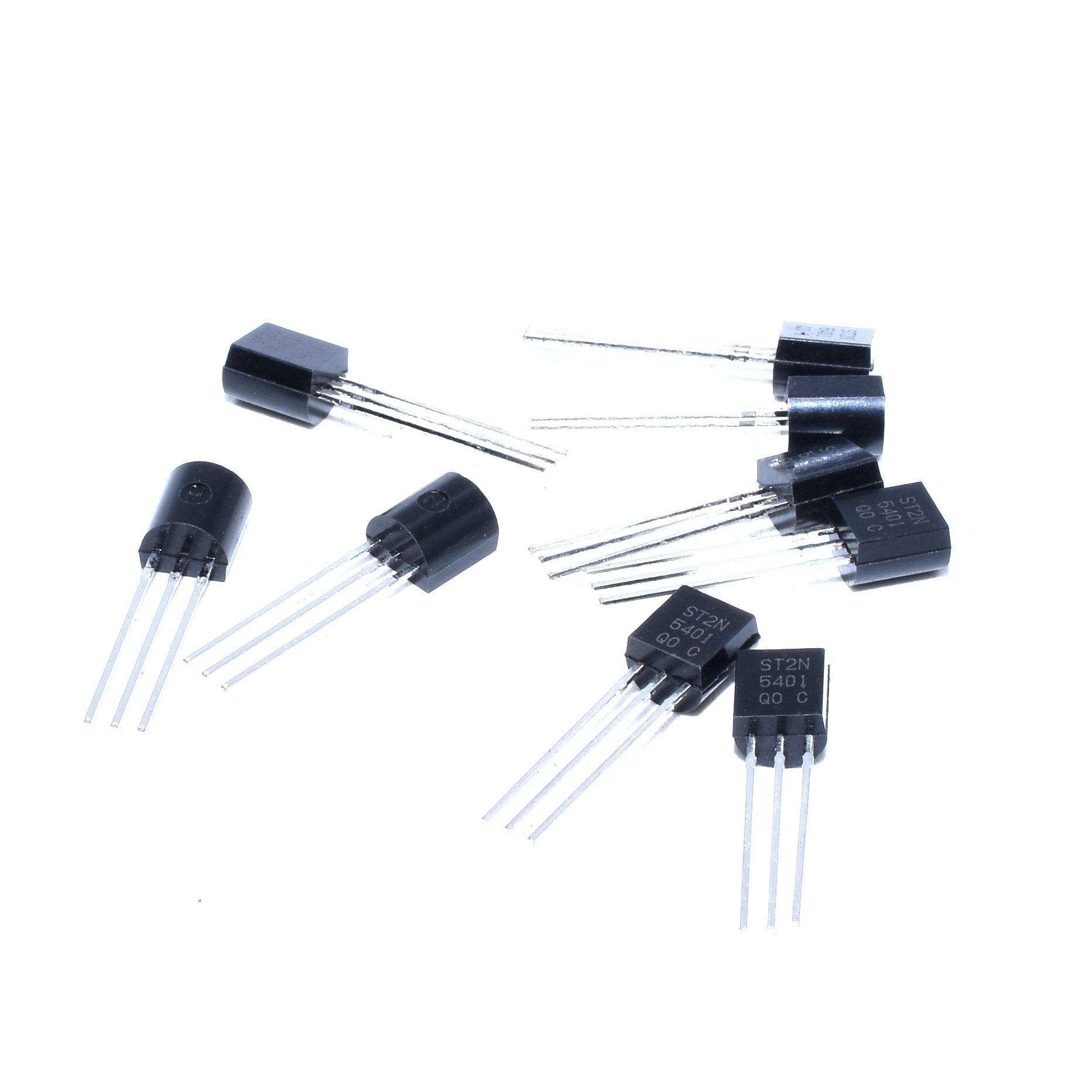A transistor is a semiconductor device used to amplify or switch electrical signals and power. It is one of the basic building blocks of modern electronics.It is composed of semiconductor material, usually with at least three terminals for connection to an electronic circuit. A voltage or current applied to one pair of the transistor's terminals controls the current through another pair of terminals. Because the controlled (output) power can be higher than the controlling (input) power, a transistor can amplify a signal. Some transistors are packaged individually, but many more in miniature form are found embedded in integrated circuits.
Physicist Julius Edgar Lilienfeld proposed the concept of a field-effect transistor in 1926, but it was not possible to construct a working device at that time.The first working device was a point-contact transistor invented in 1947 by physicists John Bardeen, Walter Brattain, and William Shockley at Bell Labs; the three shared the 1956 Nobel Prize in Physics for their achievement.The most widely used type of transistor is the metal–oxide–semiconductor field-effect transistor (MOSFET), invented by Mohamed Atalla and Dawon Kahng at Bell Labs in 1959.Transistors revolutionized the field of electronics and paved the way for smaller and cheaper radios, calculators, computers, and other electronic devices.
Most transistors are made from very pure silicon, and some from germanium, but certain other semiconductor materials are sometimes used. A transistor may have only one kind of charge carrier, in a field-effect transistor, or may have two kinds of charge carriers in bipolar junction transistor devices. Compared with the vacuum tube, transistors are generally smaller and require less power to operate. Certain vacuum tubes have advantages over transistors at very high operating frequencies or high operating voltages. Many types of transistors are made to standardized specifications by multiple manufacturers.

History
The thermionic triode, a vacuum tube invented in 1907, enabled amplified radio technology and long-distance telephony. The triode, however, was a fragile device that consumed a substantial amount of power. In 1909, physicist William Eccles discovered the crystal diode oscillator.Physicist Julius Edgar Lilienfeld filed a patent for a field-effect transistor (FET) in Canada in 1925,intended as a solid-state replacement for the triode.He filed identical patents in the United States in 1926 and 1928.However, he did not publish any research articles about his devices nor did his patents cite any specific examples of a working prototype. Because the production of high-quality semiconductor materials was still decades away, Lilienfeld's solid-state amplifier ideas would not have found practical use in the 1920s and 1930s, even if such a device had been built.In 1934, inventor Oskar Heil patented a similar device in Europe.
Importance
Because transistors are the key active components in practically all modern electronics, many people consider them one of the 20th century's greatest inventions.
The invention of the first transistor at Bell Labs was named an IEEE Milestone in 2009.Other Milestones include the inventions of the junction transistor in 1948 and the MOSFET in 1959.
The MOSFET is by far the most widely used transistor, in applications ranging from computers and electronics to communications technology such as smartphones.It has been considered the most important transistor,possibly the most important invention in electronics,and the device that enabled modern electronics.It has been the basis of modern digital electronics since the late 20th century, paving the way for the digital age.The US Patent and Trademark Office calls it a "groundbreaking invention that transformed life and culture around the world".Its ability to be mass-produced by a highly automated process (semiconductor device fabrication), from relatively basic materials, allows astonishingly low per-transistor costs. MOSFETs are the most numerously produced artificial objects in history, with more than 13 sextillion manufactured by 2018.
Although several companies each produce over a billion individually packaged (known as discrete) MOS transistors every year,the vast majority are produced in integrated circuits (also known as IC's, microchips, or simply chips), along with diodes, resistors, capacitors and other electronic components, to produce complete electronic circuits. A logic gate consists of up to about 20 transistors, whereas an advanced microprocessor, as of 2022, may contain as many as 57 billion MOSFETs.
The transistor's low cost, flexibility and reliability have made it ubiquitous. Transistorized mechatronic circuits have replaced electromechanical devices in controlling appliances and machinery. It is often easier and cheaper to use a standard microcontroller and write a computer program to carry out a control function than to design an equivalent mechanical system.
 繁體(台灣)
繁體(台灣) 简体中文
简体中文 USA(English)
USA(English) Vietnam
Vietnam